Unlocking the Power of Message Recall in Outlook Online: A New Era of Email Management
In today’s fast-paced digital world, email mistakes can happen. A mistyped email, an unintended recipient, or sensitive information sent by accident can lead to stress and potential repercussions. Microsoft has revolutionized email management by introducing the much-anticipated Message Recall feature to Outlook Online. This update aligns Outlook Online with its desktop counterpart, making email communication more user-friendly and forgiving.
What is Message Recall in Outlook Online?
Message Recall enables users to retract an email they’ve sent, either by deleting it from the recipient’s inbox or replacing it with a corrected version. Previously restricted to the Outlook desktop client, this powerful feature now extends to Outlook Online, offering greater flexibility and breaking traditional barriers, such as requiring the sender and recipient to be on the same Microsoft Exchange Server.
Key Features of Outlook Online’s Message Recall
- Cross-Platform Compatibility: The new Message Recall feature works seamlessly across devices, allowing users to recall emails from any browser-based Outlook interface.
- Expanded Recipient Flexibility: Unlike its predecessor, this update no longer requires recipients to be in the same Exchange environment, making recalls within the Microsoft 365 ecosystem more effective.
- User-Friendly Interface: With an intuitive design, recalling a message is now easier than ever. Simply navigate to your Sent Items folder, select the email, and choose your recall action.
- Real-Time Status Tracking: Stay informed with real-time notifications about the success or failure of your recall attempt, ensuring clarity throughout the process.
- Security and Privacy Assurance: The recall feature adheres to data compliance policies and security protocols. However, if the recipient has already read the email, the recall attempt may notify the sender but cannot guarantee removal.
How to Enable Message Recall Using the Exchange Online Admin Center
Enabling Message Recall for your organization requires administrative privileges. Follow these steps to activate this feature using the Exchange Online Admin Center:
- Sign in to Exchange admin center
- Click on Settings
- Click on Mail flow
- Select Enable cloud-based message recall
- Select Allow users to recall messages read by the recipients (optional)
- Select Enable recall alerts for recipients (optional)
- Select Only for recalled messages that were read by the recipient (optional)
- Set days to the maximum of 3650 days (optional)
- Click Save
Each tenant can select the options for Message Recall that work for them. If your tenant doesn’t want to recall messages read by recipients or enable alerts, you can choose to select only the Enable cloud-based message recall.
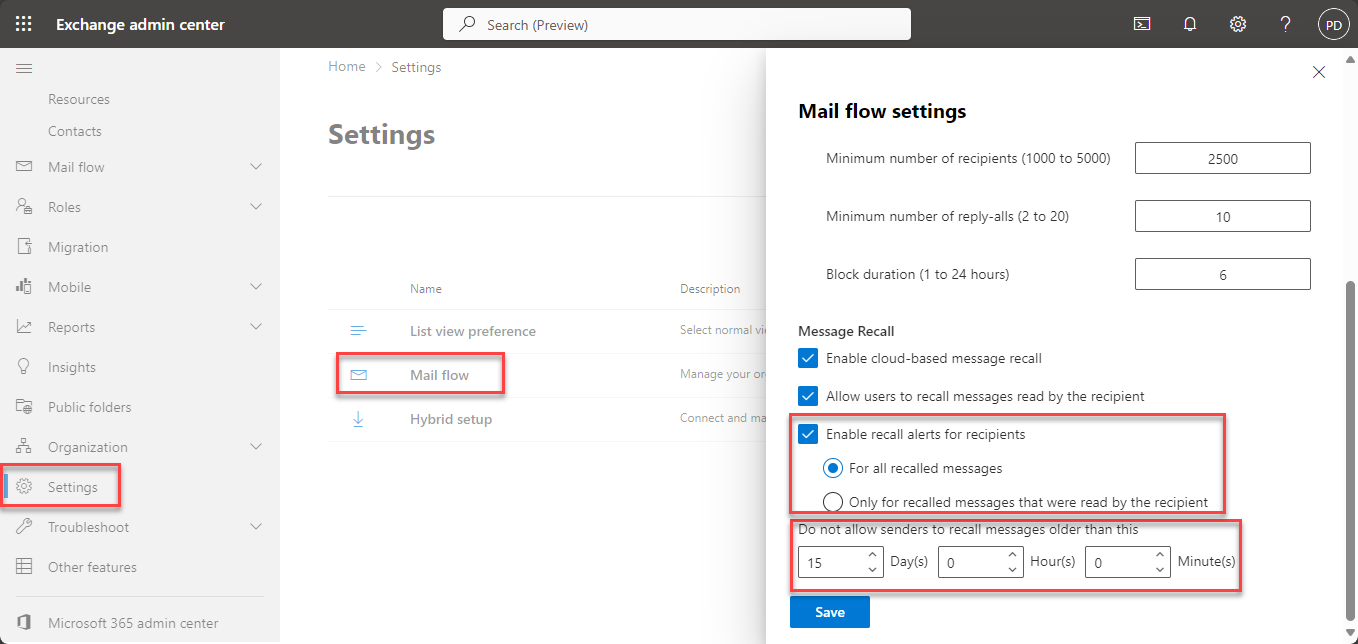
Alternatively, you can use PowerShell to enable Message Recall
To enable Message Recall in your organization with PowerShell, follow the steps below.
Firstly, you need to make sure if you have already installed ‘ExchangeonlineManagement Powershell’ module in your machine.
To verify the installation of this, run below cmdlet in your machine’s PowerShell.
Get-InstalledModule
This will display all the installed modules in your machine. Find the
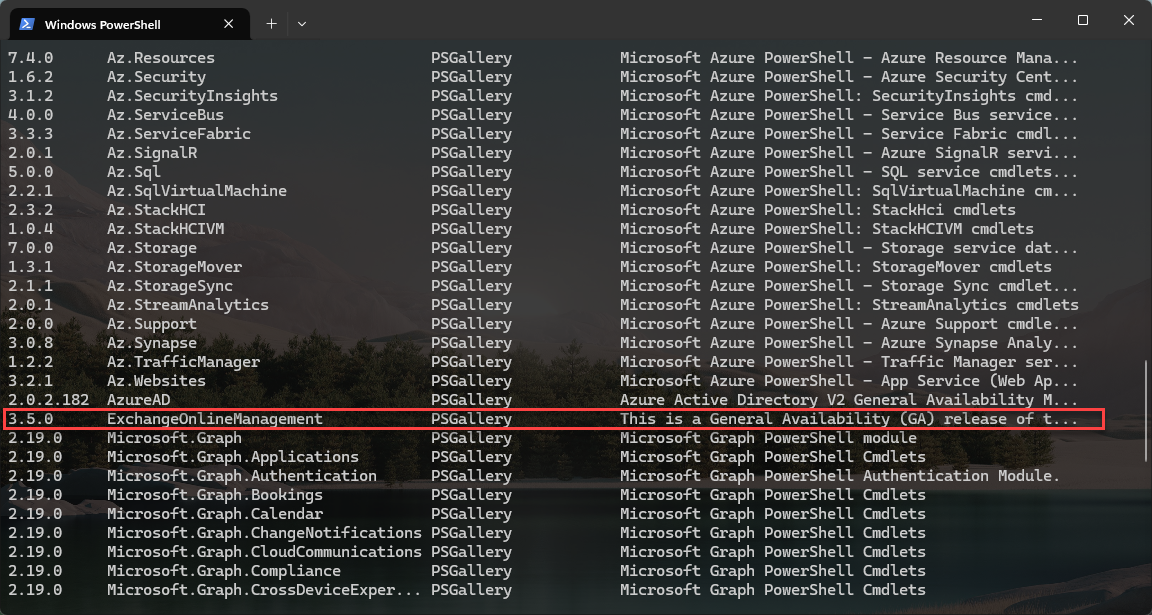
If not installed, visit below procedure to install Exchange online PowerShell Module.
Install-Module ExchangeOnlineManagement -Force
Once, PowerShell Module for Exchange online is installed, run below cmdlet to connect to Exchange online.
Connect-ExchangeOnline
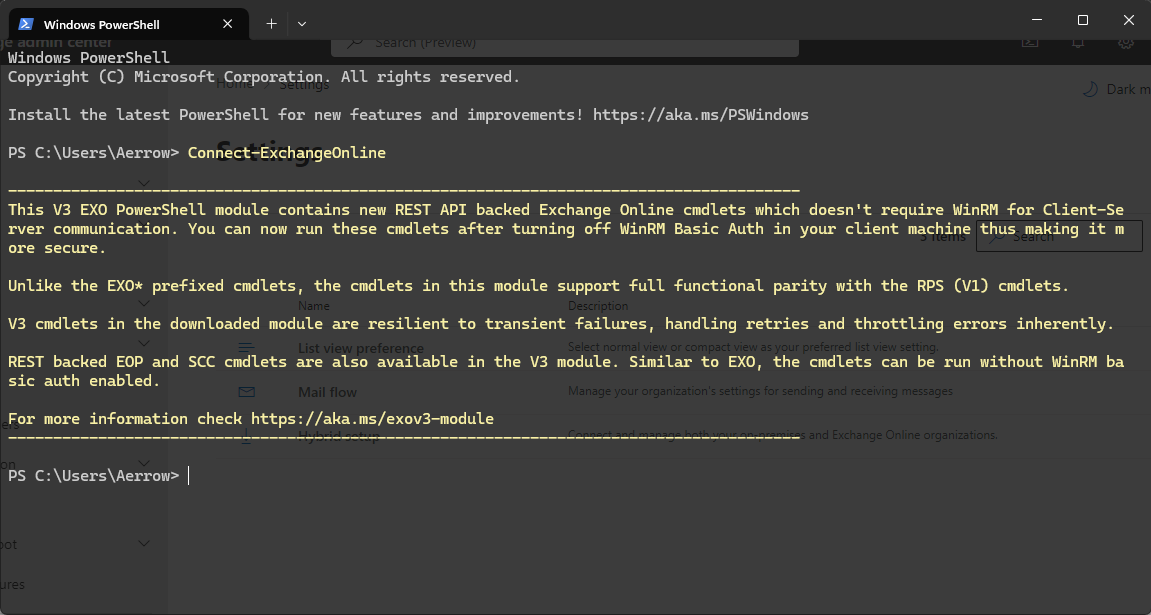
Run below cmdlet to configure message recall.
Set-OrganizationConfig -MessageRecallAlertRecipientsEnabled $true -MessageRecallAlertRecipientsReadMessagesOnlyEnabled $true
Get-OrganizationConfig | Fl MessageRecallAlertRecipients*
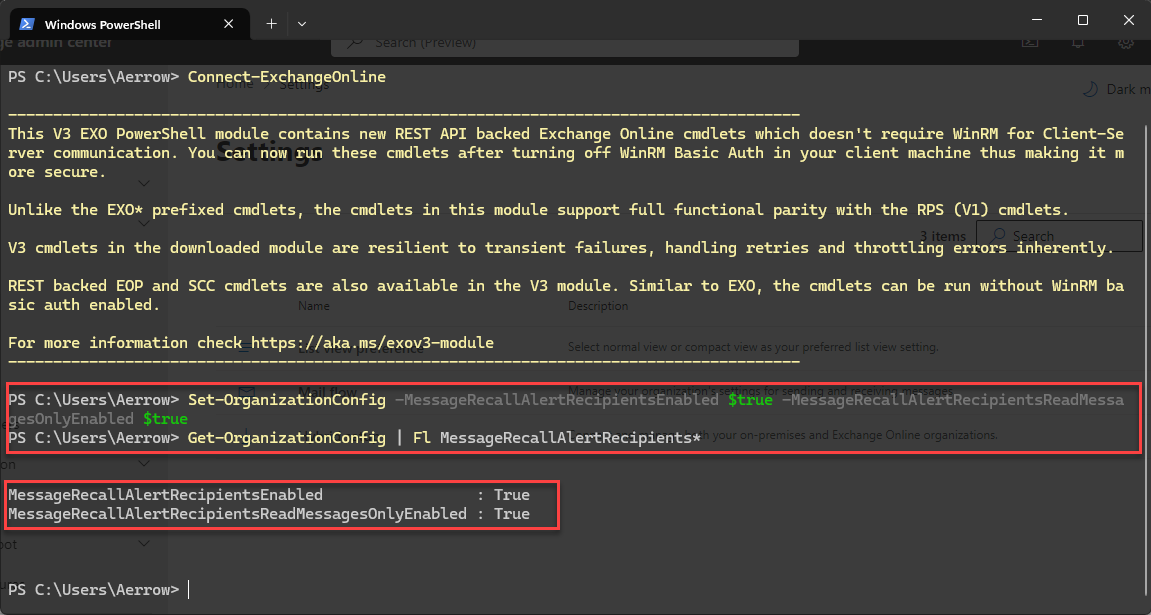
How to Use the Message Recall Feature in Outlook Online
Mastering the Message Recall feature is simple:
- Locate the Email: Access your Sent Items folder in Outlook Online.
- Start the Recall Process: Select the email you wish to recall. From the menu, click on the “Recall this message” option.
- Select an Action: Choose whether to delete the email from the recipient’s inbox or replace it with a new version.
- Confirm and Track: Confirm your action and monitor the recall status through real-time updates.
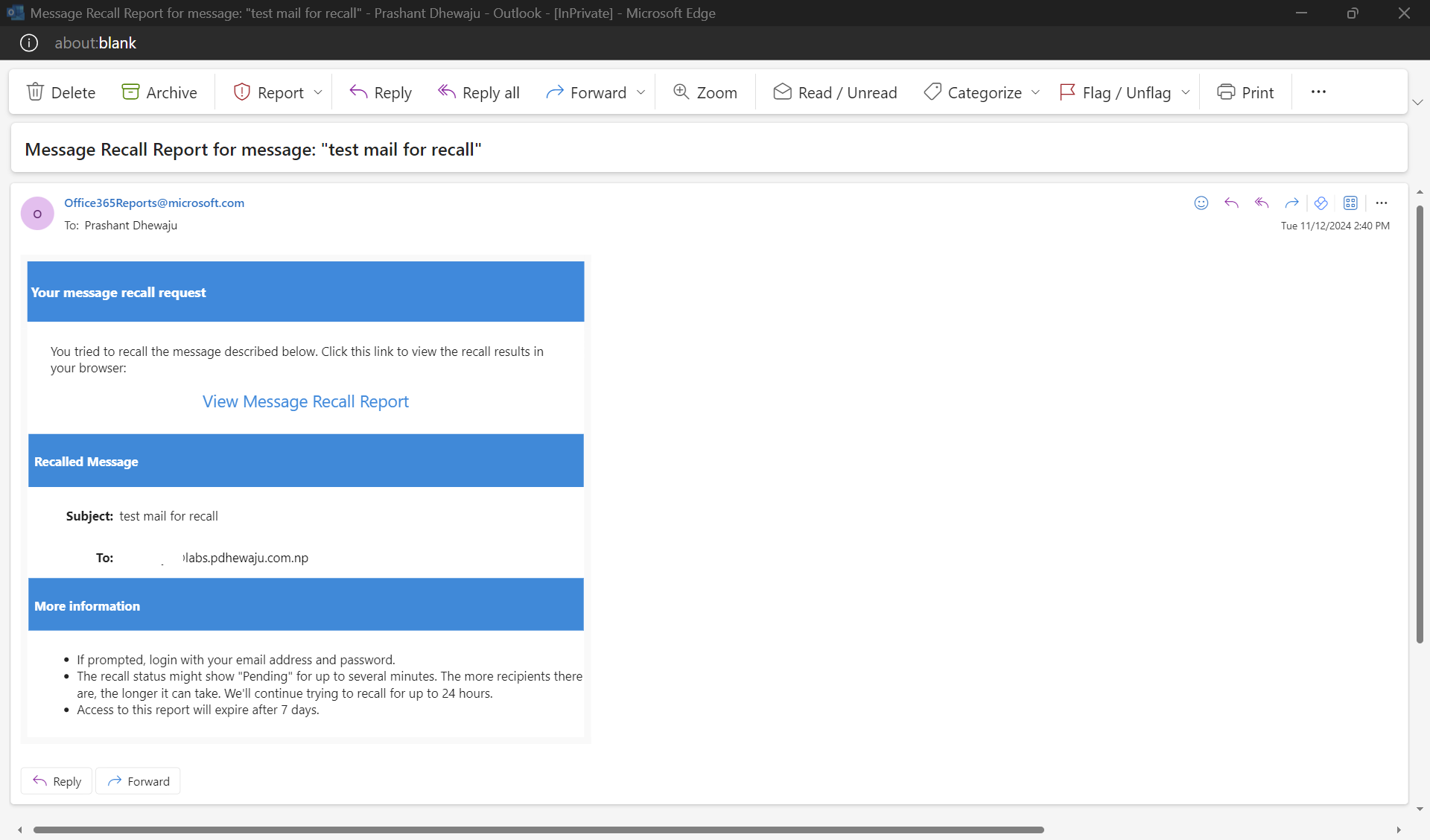
Top Use Cases for Message Recall
- Prevent Confidentiality Breaches: Quickly retract sensitive information sent to the wrong recipient.
- Correct Errors: Replace emails with typos or incorrect attachments with the accurate version.
- Boost Professionalism: Showcase accountability by addressing and correcting mistakes promptly.
Limitations and Best Practices for Using Message Recall
While robust, the Message Recall feature does have limitations:
- If the recipient has already opened the email, the recall attempt may not succeed.
- Emails sent to non-Microsoft 365 addresses or external systems are not recall-compatible.
Best Practices:
- Always double-check recipients and email content before hitting send.
- Act swiftly to recall emails, as recall success rates diminish over time.
Why Message Recall in Outlook Online is a Game-Changer
The introduction of Message Recall to Outlook Online redefines email communication by empowering users with unprecedented control and flexibility. Whether you’re managing confidential information or correcting mistakes, this feature bridges the gap between the desktop and web platforms, enhancing productivity and user satisfaction.
Ready to experience this innovative feature? Log in to Outlook Online today and explore the power of Message Recall. Say goodbye to email blunders and hello to seamless communication!
Related Posts

Cross-Tenant shared channel communication for Microsoft Teams
![[How To]Change Windows 8 Product Key To Complete Activation](/wp-content/themes/ribbon-lite/images/nothumb-related.png)
[How To]Change Windows 8 Product Key To Complete Activation

Stellar Converter for OST Review: Convert Inaccessible OST Files to PST Format
About Author
pdhewjau
Prashant is a Principal Cybersecurity Specialist at Thakral One Nepal. His prior position as a Modern Work Security Specialist at Microsoft saw him providing invaluable guidance to major clients in Bangladesh, Brunei, Cambodia, and Myanmar, assisting them with their foundational security needs. Awarded the esteemed Microsoft Most Valuable Professional (MVP) accolade in 2017, Prashant is recognized globally among Microsoft peers. Since 2010, he has imparted his expertise as a Microsoft Certified Trainer (MCT), conducting specialized training across Nepal.